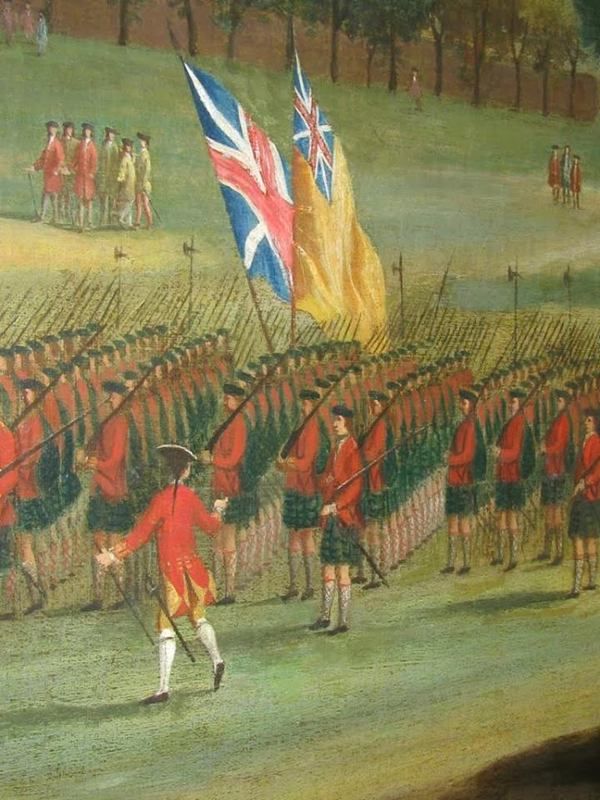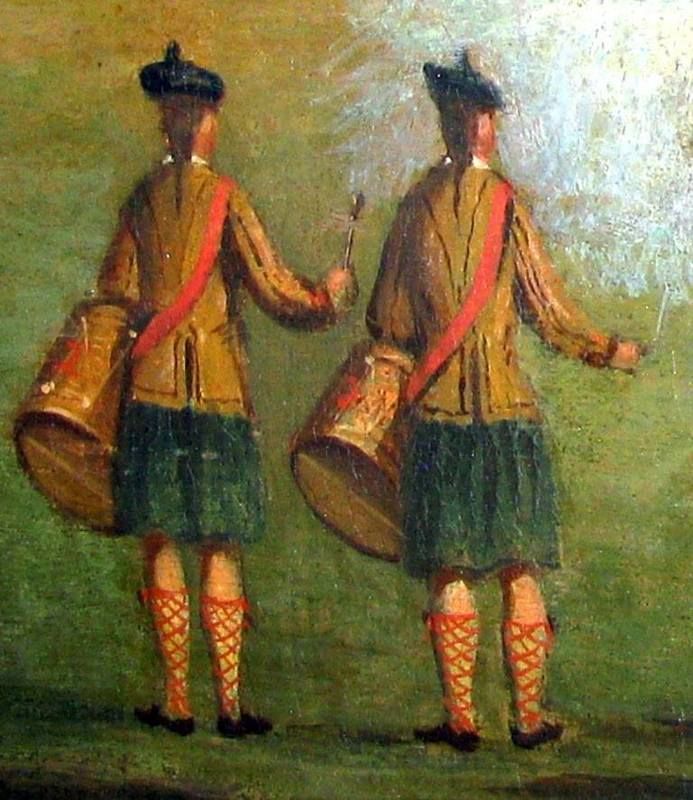|
-
15th July 16, 04:59 AM
#41
 Originally Posted by Luke MacGillie

Here are a couple of Quotes from the 2/42 Orderly Book:
"The officers of both battalions... a pair of blue leggans each to be uniform with the mens."
"The men to be completed as soon as possible in leggans and fellewbeggs..."
Thanks, that's very interesting. Stuff like that is why I love imagery; verbal descriptions are open to wide interpretation (now, but back then everyone would have known exactly what was meant).
Officers, being mounted or even if on foot often dressed as they would be for riding, would be expected to have their lower legs covered.
What fascinates me is the men having the combination of "leggans and fellewbeggs" which I suppose is a phonetic rendering of feile-beag. What date is that document? It's one of the earlier references to the feile-beag in the army, I would think.
But why did your re-enactment unit go with brown, when the document above specifies blue?
Last edited by OC Richard; 15th July 16 at 05:02 AM.
Proud Mountaineer from the Highlands of West Virginia; son of the Revolution and Civil War; first Europeans on the Guyandotte
-
-
15th July 16, 05:29 AM
#42
That quote comes from the Orderly Books of the regiment, covers 1758-1761.
The term was quite well entrenched in military speak by that period, here is a quote of a letter from an Army Surgeon to Lord Loudoun the Commander in Chief here in America from 1758:
"The Art of War is much changed and improved here. I suppose by the End of Summer it will have undergone a total revolution. We are now literally an Army of round Heads. Our Hair is about an Inch Long; The Flaps of our Hats, which are wore slouched about two Inches and a half broad. Our Coats are docked rather shorter than the Highlanders, determined Napier says, that the French shall not stick in our Skirts. The Highlanders have put on Breeches and Lord Howe's Filabegs. Some from an Affection to their Gorgets still wear them. Swords and Sashes are degraded; and many have taken up the Hatchet and wear Tomahawks."
There is also this image of the 42nd's final review/inspection prior to deploying to North America in 57, as you can see the Enlisted men all wear the great kilt, but the drummers are using the little one.


-
-
15th July 16, 05:32 AM
#43
So cool.
I just re-read the appropriate portions of Barnes and it seems that he might have had access to those documents you mention, writing in the 1950s.
Proud Mountaineer from the Highlands of West Virginia; son of the Revolution and Civil War; first Europeans on the Guyandotte
-
-
15th July 16, 05:41 AM
#44
There is the extract of the Orderly books that was done in 1947 by WB Wilson, I do not know for sure, but I think that the transcription/extract was done for Colonel RFH Wallace, CMG for his article "Regimental Routine and Army Administration in North America in 1759. That was Published in the Journal of the Society for for Army Historical Research in the spring of 1952. Wallace also quotes the Quartermaster book in that article.
Ian McCullough also quotes from the Quartermaster book in "Son's of the Mountains", and like I said, being a former Commander of the Canadian Black Watch, its only natural that the Regimental museum would allow him access to things mere mortals are not allowed :-) Don't get me wrong, I don't begrudge him his access, if I had it, I would use it to its full potential!
-
 Posting Permissions
Posting Permissions
- You may not post new threads
- You may not post replies
- You may not post attachments
- You may not edit your posts
-
Forum Rules
|
|


















Bookmarks